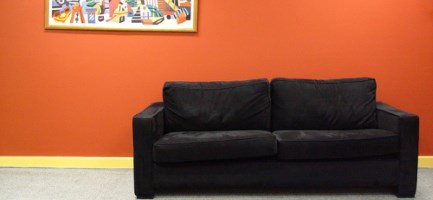Over the last 2 weeks I have been onsite with clients in Ontario and Quebec and I was impressed and excited by the changes they had made to their office space.
The workspace and team collaboration spaces were open, bright, modern, colourful, multi-purpose and very tech savvy. We have explored the issue of workspaces before, but I wanted to re-visit again to see if the research supports that a capital investment in more collaborative and engaging spaces actually improves performance.
HBR Research
In a Harvard Business Review article, they explore the benefits of “colliding” into colleagues and the benefits of informal and frequent interactions between employees from different areas of the business. They state that, in the future “we must aggressively change the definition of what workspace is, from where work is done to how it’s done, and then design spaces—physical and digital—around that. The office of the past was a literal box of cubicles and desks, meeting rooms and common spaces. In the office of the future, we’ll be thinking and working outside it” (Workspaces that Move People, October 2014)
The article shares a number of interesting insights about the benefits of creating opportunities and literally forcing people to mingle through:
- fewer coffee machines but larger spaces – more employees collide that way
- larger cafeteria / break rooms– more chance encounters with others and time to hang out with colleagues
- easier collaboration – improved technology which increase the probability of interactions that will lead to innovation and productivity
One organization profiled in the article found that when they measured social interactions, the data showed that when a salesperson increased interactions with coworkers on other teams—that is, increased exploration—by 10%, his or her sales also grew by 10%. An elegant correlation.
To read the full HBR article click here: https://hbr.org/2014/10/workspaces-that-move-people.
I was impressed by our clients’ multi-purpose spaces. One company converts their high tech learning room into a yoga studio. Another client directed me to their ‘Green Tea Room’ for decaf beverages and somewhere where employees can feel more relaxed and zen. The use of bold colours, glass and module furniture create a bright, open and lively environment. The lobby even consists of a living wall of plants which reduces toxins from the air and enhances the air quality.
These innovative changes to the workspace focus on making the environment engaging, attractive and pleasant for people to spend their time. The ultimate goal is to have employees get up from behind their screens and interact. Doing so has proven to increase overall performance and productivity. By increasing the number of engagement points between colleagues, best practices, new ideas and solutions to common challenges can be shared. Despite all of collaborative technical tools, the data shows that digital communication can’t replace face-to-face interaction. Studies with sociometric badges (badges that capture interaction, communication, and location information) confirm that remote teams don’t perform as well as those in physical proximity. “Chance encounters and unplanned interactions between knowledge workers, both inside and outside the organization—improve performance”.
Express Yourself!
Some of the more innovative and creative workspaces allow and encourage employees to express themselves. Employees can post photos, draw images and put up decorations that they love. The work environment can uniquely reflect the personalities of the people that work there. The idea that every department or floor has to look the same is completely abandoned. The common theme is a cool environment that inspires the people that work within it. Check out the this video of funky workspace that Canadian commerce company Shopify has created where work and fun are blended together :
Blended Environments
In the future, we may work in a much more blended way surrounded by professionals from a range of companies and intermixed with people from the community in which we work.
As noted in the HBR article, this concept started with coworking spaces, which were sought out by creative people who wanted to work outside of the confines of an office, but still wanted the ability to interact with others. Employees from different industries choose to work side by side because they believe their performance will improve. This is popular today with small business owners and independent contractors who rent office space in a full service business centre.
This approach is now being expanded to include a blend with partners, customers and community members. The CEO of Zappos, is investing $350 million in the area around the company’s new headquarters to grow the local start-up and entrepreneurial community in a way that will organically attract talent to the area, benefiting both Zappos employees and the neighborhood.
The preliminary results of this investment show that there was a 42% increase in face-to-face encounters, a 78% increase in participant-generated proposals to solve specific problems, and an 84% increase in the number of new leaders—participants who initiated work and collaboration and developed project scope and objectives. Ten new civic and local community projects were launched. This may be a new model for corporate campuses where public and private spaces are interwoven and there is a blending between living and working spaces.
Giselle Kovary
As president and co-founder of n-gen People Performance Inc., Giselle is dedicated to building strategies and programs that target, motivate and engage a multigenerational workforce. She is a sought after resource to industry leaders, having worked with 18 of the top Fortune 500 companies. Over 60,000 people globally have experienced an n-gen workshop or presentation. She has devoted more than fifteen years to researching the impact that generational differences have on organizational performance. Giselle has co-authored two books: Loyalty Unplugged: How to Get, Keep & Grow All Four Generations and Upgrade Now: 9 Advanced Leadership Skills. She has a Master’s degree in communication studies from the University of Windsor.

Connect With Us
Contact Us